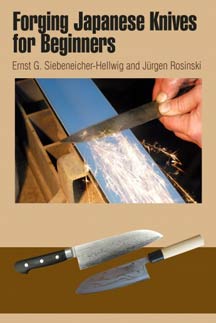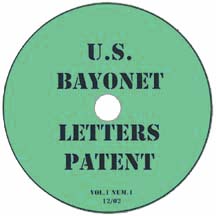- You cannot add "U.S. and Allied Military Knives - M3’s and M4’s by Bill Walters" to the cart because the product is out of stock.
Confederate Bowie Knives by Jack Melton, Josh Phillips, and John Sexton
$69.95
*THIS PRODUCT IS NO LONGER AVAILABLE.
An amazing and beautiful resource covering the entire gamut of bowie knives made for the South’s defense during the Civil War. Filled with new information and over 856 photographs, this new volume is sure to be the definitive guide to Confederate knives for many years to come.
Out of stock
Description
A truly amazing and beautiful resource covering the entire gamut of bowie knives made for the South’s defense during the Civil War. Filled with new information based on the authors’ original research from primary source material, this new volume is sure to be the definitive guide to Confederate knives for many years to come.
Features:
* 856 full-color photos illustrating more than 350 of the finest Southern Bowies in existence – including D-guards and side knives.
* Full historical and collector details on all known types of knives made in Confederate factories, including unidentified types and the Georgia and Alabama Contracts.
* Includes all of the most famous makers of Confederate knives, from Boyle & Gamble and Louis Froelich to Nashville Plow Works and Thomas Leech & Co.
* Extensive, valuable coverage of locally made Southern knives, including the many identified makers as well as those whose origins are still unclear.
* A full discussion of dug relic knives, with a large selection of intriguing examples shown and explained.
* New research and freshly discovered makers… previously unpublished information available nowhere else but here!
* Perhaps the largest album of historical images of Confederate soldiers holding Bowie knives ever assembled.
BOOK REVIEW
Reviewed by Knife World Staff
Throughout its history, knife collecting has developed, for the most part, with reference books created to aid those with an interest in pursuing a particular area of specialty. One by one, the major fields were addressed by pioneering authors like M.H. Cole, Robert Abels, and Dewey Ferguson, and these books opened the doors of collecting to others, who followed them with more specialized, detailed, and accurate books. In short, the growth and maturation of knife collecting specialties has gone hand-in-hand with the publication of quality reference books.
While Confederate bowie knives were one of the first knife collecting subjects to be addressed in print, those pioneering works left a great deal to be desired. Inexplicably, it’s taken over 50 years for that situation to be corrected with an extensive, well-researched, and beautifully illustrated reference book – a book capable of educating and inspiring a new wave of collectors. But with the publication of Confederate Bowie Knives, that go-to book has finally arrived.
Confederate bowies are almost as intimidating to knife collectors, in a completely different sense, as they must have been to the blue-clad invaders they were intended to exterminate. And no wonder! Unlike every popular knife collecting niche, these knives are usually unmarked, they don’t often follow patterns or regulations, and since they were made by hundreds of different craftsmen from blacksmiths to carpenters to carriage makers, there are few hard-and-fast rules about them. Consider also that good examples are expensive, that the majority of purported Confederate knives are counterfeits, and that learning to tell the difference between an authentic knife and a fraud takes time and effort, and you can see why collecting them is no small challenge – and why a good book on the subject is so important.
Confederate Bowie Knives is a beautifully done, hardcover volume filled with full color photographs of more than 350 of the finest Confederate bowies in existence, both “D-guards” (those with D-shaped knucklebows) and “side knives” (all Confederate bowies that aren’t D-guards). And while the photography is both impressive and extensive (856 photos in total), it’s much more than a picture-book.
The book opens with four chapters that explain why these knives were made, who made them, how they were actually used, and how they were viewed by soldiers on both sides of the conflict, as well as the press and common citizens. Leaning heavily on the authors’ original research from primary source material, these chapters reveal much about Confederate knives that has been little understood to this point. The text is supported by dozens of quotations from Civil War newspapers and other period sources, which not only serve to validate the authors’ conclusions but also make for very entertaining reading. The fifth chapter, “Collecting Confederate Knives,” contains some very good advice for aspiring collectors, as well as a guide to terminology and nomenclature.
Then, the book turns to the knives themselves. These are divided into groups, “Factory Knives” for those knives apparently turned out in a factory setting, and “Local Knives” for the remainder – each group further divided into knives by makers identified and unidentified. Enthusiasts who have not kept up with the latest research will be surprised to note that the work of about 40 different Confederate bowie knife makers has been identified, many of whom did not mark or rarely marked their knives. Each of the identified makers is addressed separately, with a summary of their known history and as many examples of their work as were available or practical to show. Specific types, such as the Georgia Contract Knives, are also dealt with in their own sections. Unidentified knives aren’t neglected either, but there’s usually less to be said about them.
In total, about 210 pages are devoted to knives and specific makers, and if there’s any real shortcoming in this section I can’t seem to find it. Almost every example is illustrated with large, clear photos of both sides as well as a handle closeup showing the pommel end, and each is accompanied with detailed information about the knife’s Manufacturer (if known), Overall Length, Blade Length, Blade Thickness, Blade Width at the Ricasso, and the Maximum Blade Width, along with descriptions of the Scabbard, Guard, Grip, Markings, Provenance, the ownership at time of publication, and any other remarks.
Several fine examples of relic knives are then illustrated before moving on to the final chapter, a gallery of about 70 of the finest period images of Confederate soldiers armed with their prized bowie knives. Gazing into the eyes of their proud and determined owners is a fitting way to conclude a book about these fascinating objects.
Through words and photographs, this book makes it easy to understand why collectors are so passionate about these knives and their fascinating histories. It will serve as a fascinating introduction for anyone who harbors the slightest interest in the subject, and promises to be the definitive reference work on Confederate bowies for the foreseeable future. A truly superb book on a subject that has needed one for far too long.
Confederate Bowie Knives
by Jack Melton, Josh Phillips, and John Sexton
978-1931464529
Hardcover, 288 pp.





Reviews
There are no reviews yet.